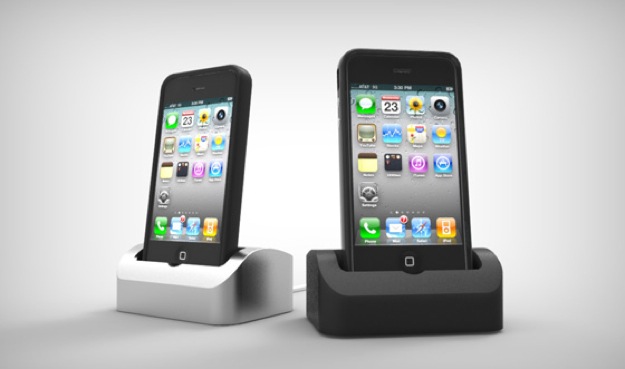
This week we witnessed not only a great new design for an iPhone docking station, but also the fastest-funded Kickstarter project ever, jumping in just a few days to almost $250,000, far exceeding the project’s $75,000 goal. The design, called the Elevation Dock ($90 retail, $59 for backers), was created by Casey Hopkins and gives users exactly what the Apple iphone dock should have: ease of use and great aesthetics.
The Elevation Dock is CNC-machined out of a single piece of aluminum, giving it a sleek look that goes with all of Apple’s equally-sleek products. The dock is substantial in weight and has tacky pads on the bottom, with a low-friction connector that charges your phone but allows you to remove the phone at any time without much effort. There’s no more need to hold the dock down while you pull your phone out with the Elevation Dock. The dock was also designed to work with iPhones with cases or without cases, which seems to be a near-constant failure with most docking products designed for the iPhone. The dock also tilts your phone back at an 8-degree angle, making it perfect for Facetime calling or as a bedside alarm clock station.
Great design if you ask us. Why didn’t Apple think of this?
Editors' Recommendations
- An Apple insider just revealed how iOS 18’s AI features will work
- 5 phones you should buy instead of the iPhone 15
- iPhone 16: news, rumored price, release date, and more
- iPhone SE 4: news, rumored price, release date, and more
- 3 reasons why I’ll actually use Anker’s new iPhone power bank


